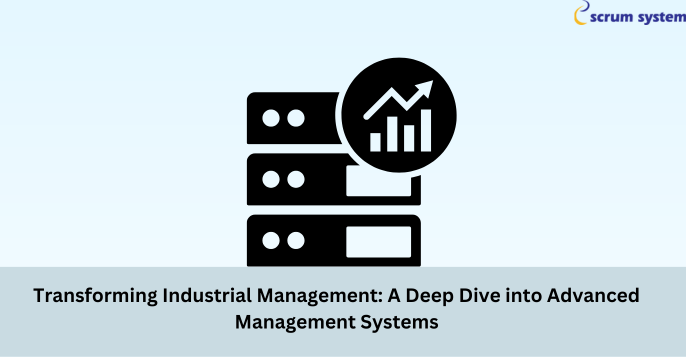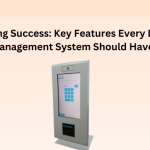In the dynamic landscape of today’s industrial environment, the significance of effective management systems cannot be overstated. Beyond being mere tools, these systems are the linchpins that redefine how industries operate, guaranteeing efficiency, safety, and compliance. In this blog, we will explore the transformative power of cutting-edge management systems, focusing on key pillars such as Visitor Management, Labour Management, Emergency Assembly Points, and Safety Training.
The Cornerstone: Visitor Management System
At the heart of modern industrial management lies the pivotal role of a robust Visitor Management System (VMS). This system goes beyond the conventional sign-in sheets, redefining how industries handle and track visitors. Its significance lies in its ability to streamline processes, enhance security, and ensure compliance with regulations, including the General Data Protection Regulation (GDPR). By minimising the need for manual intervention, a VMS makes visitor handling more efficient and secure, contributing to a seamless flow of visitors through industrial facilities.
Key Features of a Visitor Management System:
Efficient Tracking: A VMS efficiently tracks the movement of visitors, providing real-time data on who is on-site at any given moment. This information is invaluable for security purposes and can aid in emergency situations.
Compliance Assurance: With the ability to capture and store visitor data securely, a VMS ensures compliance with data protection regulations. This is particularly crucial in industries that deal with sensitive information and are subject to strict privacy laws.
Enhanced Security: By automating the visitor check-in process and integrating with access control systems, a VMS enhances overall security. Unauthorised access is minimised, and the risk of security breaches is significantly reduced.
Optimising Workforce: Labour Management System
The effective management of a workforce is a critical aspect of industrial operations. A Labour Management System (LMS) emerges as a key player in handling workforce data, schedules, and compliance requirements. This system is not just about tracking hours worked; it is a strategic tool for understanding and optimising workforce productivity and wellbeing. By ensuring compliance with labour laws and fostering engagement, an LMS contributes to a well-managed and motivated workforce.
Benefits of a Labour Management System:
Accurate Workforce Data: An LMS provides accurate and up-to-date workforce data, facilitating informed decision-making regarding staffing levels, resource allocation, and project planning.
Compliance Management: By automating timekeeping and attendance tracking, an LMS ensures adherence to labour laws and regulations, minimising the risk of legal issues and penalties.
Employee Wellbeing: Through features like shift planning and workload optimization, an LMS contributes to the wellbeing of employees by preventing burnout and ensuring a balanced workload.
Prioritising Safety: Emergency Assembly Points
Safety management is a paramount concern in industrial settings. An Emergency Assembly Point (EAP) system is designed to address this concern by providing a well-organised plan for evacuation in the event of emergencies such as fires or natural disasters. This system plays a crucial role in ensuring quick headcounts and safeguarding everyone’s safety, thereby minimising chaos and potential harm during critical situations.
Key Components of an Emergency Assembly Point System:
Evacuation Plans: An EAP system includes clear and easily accessible evacuation plans, ensuring that employees know the designated assembly points and evacuation routes.
Quick Headcounts: In emergencies, time is of the essence. An EAP system facilitates quick and accurate headcounts, allowing emergency responders to ascertain if everyone has safely evacuated the premises.
Communication Channels: Effective communication is vital during emergencies. An EAP system includes robust communication channels to relay important information to employees and emergency responders.
Investing in Knowledge: Safety Training Systems
The final pillar in redefining industrial management is comprehensive safety training. Advanced management systems go beyond traditional training methods, offering interactive and engaging safety training solutions. These systems leverage technologies such as virtual reality, interactive kiosks, and e-learning modules to ensure that employees are not just informed but well-equipped to handle workplace hazards.
Key Features of Safety Training Systems:
Interactive Learning: Utilising technologies like virtual reality, safety training systems create immersive and interactive learning experiences. This ensures better retention of information and practical application in real-world scenarios.
Adaptability: Safety training kiosk systems can be tailored to the specific needs of different industries, addressing unique hazards and compliance requirements. This adaptability ensures that training is relevant and effective.
Continuous Learning: With e-learning modules and ongoing training programs, safety training systems promote a culture of continuous learning. This is essential in industries where new risks and safety protocols may emerge over time.
The Collective Impact: Redefining Industrial Management
In unison, these advanced management systems—Visitor Management, Labour Management, Emergency Assembly Points, and Safety Training—usher in a new era of industrial management. They are not isolated tools but interconnected components that synergize to streamline operations, enhance security, and prioritise the safety and wellbeing of both employees and visitors.
Beyond efficiency gains, these systems prove that, with the right technology, industrial management can reach new heights. From securing facilities and optimising workforce management to ensuring a swift and organised response in emergencies, these systems redefine the industrial landscape. As industries continue to evolve, embracing these transformative technologies is not just a choice; it’s a strategic imperative for success in the fast-paced and ever-changing industrial environment.
Conclusion
In the ever-evolving landscape of industrial management, the integration of advanced management systems marks a paradigm shift. The convergence of Visitor Management, Labour Management, Emergency Assembly Points, and Safety Training systems symbolises a holistic approach that transcends individual tools. These interconnected components operate in harmony, reshaping how industries function by optimising efficiency, fortifying security, and placing the safety and wellbeing of employees and visitors at the forefront.
At the forefront of this transformative wave is Scrum System, a pioneer in providing cutting-edge solutions that epitomise this integrated approach. Their suite of products, accessible at scrum-system.com, showcases a commitment to revolutionising industrial management through innovative technology.
The GDPR-compliant VisiteX™ Touch stands out as a testament to the meticulous approach Scrum System takes towards visitor management. It not only streamlines the check-in process but also ensures data security and compliance with privacy regulations. This advanced system minimises the need for manual intervention, exemplifying efficiency and security in managing visitors within industrial facilities.
Simultaneously, Scrum System’s STK Kiosk for safety training underscores their dedication to creating innovative solutions. By leveraging technologies like virtual reality and interactive learning modules, this kiosk transforms safety training into an engaging and immersive experience. This not only enhances the retention of crucial safety information but also ensures that employees are well-prepared to handle potential hazards in the workplace.
By embracing these transformative technologies from Scrum System, industries are not just making a choice; they are adopting a strategic imperative for success in the fast-paced and ever-changing industrial environment.



